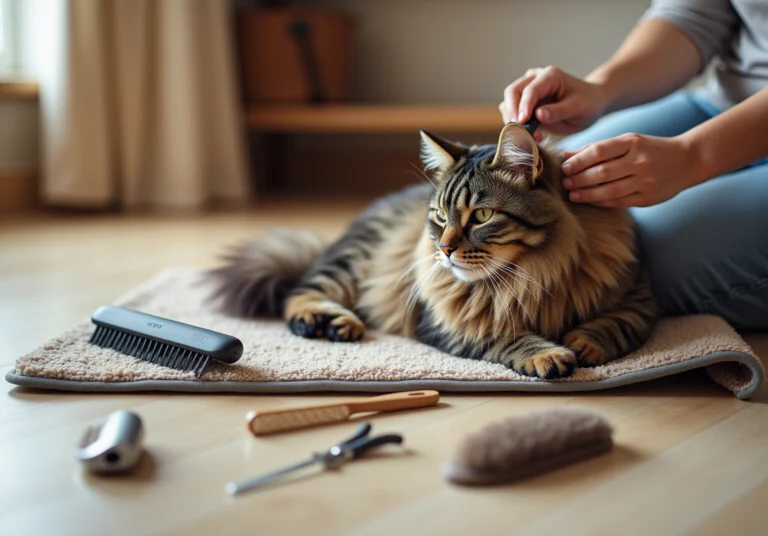How Smart Are Cats? Assessing Feline Intelligence Step-by-Step
Overview
Cats exhibit a unique form of intelligence that deserves our attention and admiration. Their problem-solving abilities, social awareness, and adaptability set them apart from the traditional measures of intelligence we often associate with dogs. By exploring the remarkable cognitive skills of cats, such as their capacity for object permanence and their ability to recognize human voices, we can foster a deeper appreciation for these wonderful creatures. Each breed brings its own specific traits that influence their cleverness, showcasing their independent and nuanced behaviors. Let’s celebrate these qualities and nurture our furry family members with the understanding they truly deserve.
Introduction
Feline intelligence often remains an enigma, wrapped in misconceptions that overlook the unique cognitive abilities of our beloved cats. Understanding just how smart our furry family members truly are opens a window into their world, revealing their impressive problem-solving skills, social interactions, and adaptability.
But how can you, as a caring pet owner, accurately assess your cat’s intelligence and appreciate these remarkable traits? This exploration not only highlights various methods for evaluating feline cognition but also addresses the intriguing differences among breeds, inviting you to deepen your connection with your cherished companions.
Understand Feline Intelligence: What It Means to Be Smart
Feline cognition encompasses a diverse array of cognitive abilities, including problem-solving, social interaction, and adaptability. Unlike dogs, whose cleverness is often assessed by their compliance and trainability, cats showcase their intelligence through independent actions and unique problem-solving skills. For instance, research reveals that cats can recognize their names and their owners’ voices, responding with subtle behaviors like head and ear movements rather than overt actions. This ability highlights their social intelligence and awareness of their surroundings.
Cats are adept at overcoming challenges, as evidenced by their ability to open doors or locate hidden treats, showcasing their talent for learning and adapting. Studies have shown that adult cats possess object permanence, similar to what is seen in human infants, indicating they can remember the presence of objects even when they are out of sight. Additionally, some cats can differentiate between time spans of eight seconds and ten seconds, underscoring their cognitive skills related to time perception. Moreover, cats have nearly double the number of cortical neurons—around 300 million—compared to dogs, which may suggest a greater capacity for certain cognitive tasks.
Understanding how smart cats are in terms of their cognition is vital for pet owners who wish to appreciate their cat’s abilities fully. Recognizing how smart cats are and that intelligence can manifest in various forms allows for a deeper appreciation of your furry family member’s unique personality and skills. Since cats often display cleverness in ways that differ from traditional measures, such as compliance, it is essential to notice and celebrate their independent problem-solving abilities and social behaviors. It’s also important to acknowledge that as cats age, they may experience cognitive decline known as feline cognitive dysfunction (FCD), which can affect their behavior and mental functions over time.
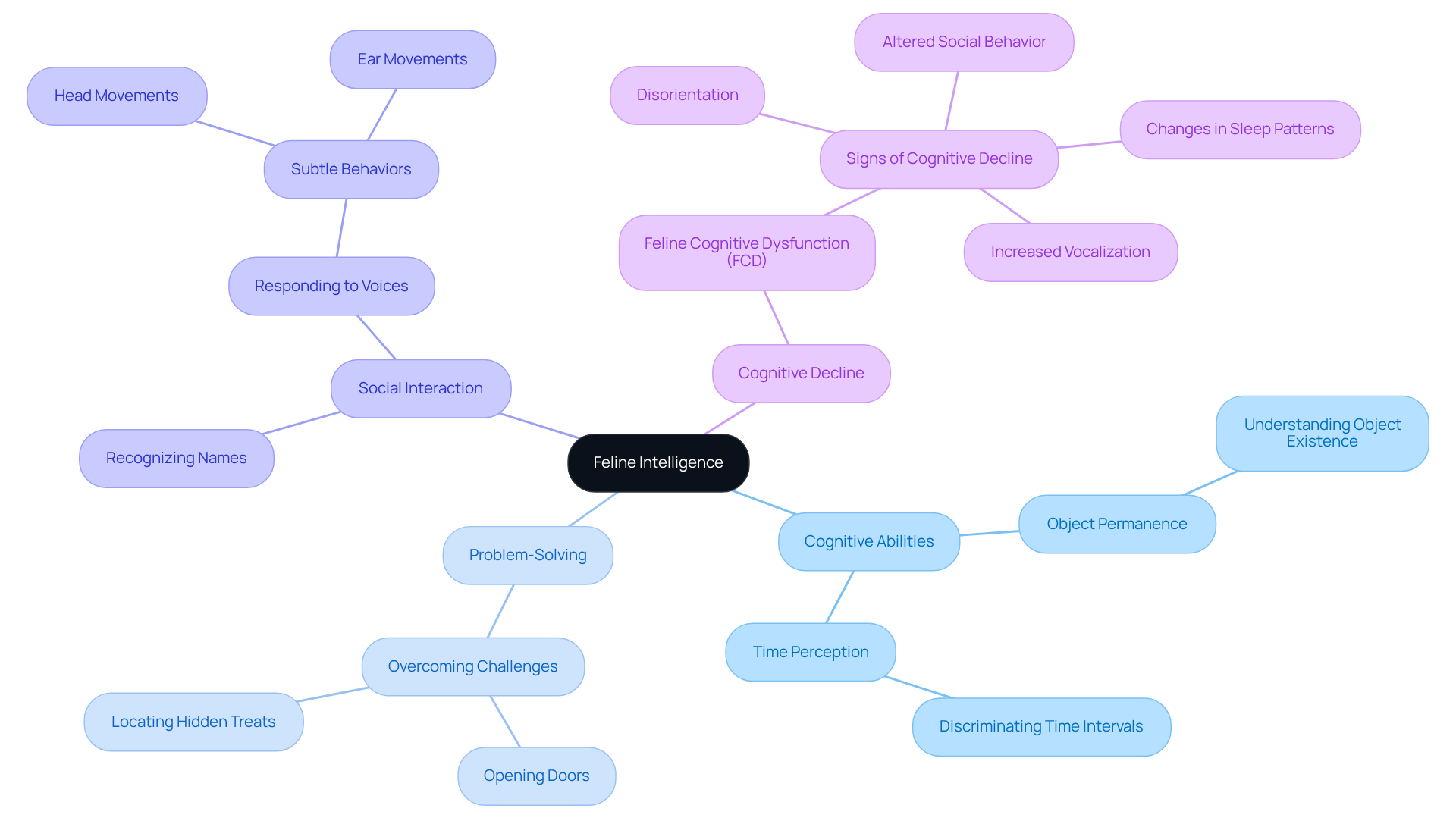
Evaluate Your Cat’s Intelligence: Key Assessment Techniques
To evaluate your furry family member’s intelligence, consider these nurturing techniques:
-
Puzzle Toys: Introduce puzzle toys that encourage your cat to solve problems for treats. Research shows that all 31 felines in a recent study successfully identified changes in word-image combinations, highlighting their ability to engage with these toys. Observe how quickly and effectively your cat interacts with the toy; a faster solution often indicates higher intelligence. Plus, puzzle feeders can help reduce obesity while providing essential mental stimulation for your beloved pet.
-
Training Sessions: Conduct short training sessions using clicker training or simple commands. Studies indicate that positive reinforcement can significantly enhance your cat’s memory and focus, making training more effective. Notice how well your cat responds to signals and how swiftly it learns new skills; this can help you understand how smart are cats and reveal their mental capabilities.
-
Interactive Games: Engage your cat in interactive games that require strategic thinking, such as hide-and-seek with treats or toys. Pay attention to how your cat strategizes to find the hidden items, as this can uncover their problem-solving abilities. Cats have been shown to learn to manipulate puzzle toys, further enhancing their mental skills.
-
Social Interaction: Observe your cat’s interactions with other pets or humans. Intelligent felines often display social awareness, adjusting their behavior based on the responses of others. The ability to interpret social signals raises interesting questions about how smart are cats as it is a strong indicator of intellectual refinement. Research indicates that cats can understand human emotions and perceived dangers, further demonstrating their social awareness.
By utilizing these methods, you can gain valuable insights into your cat’s cognitive skills and tailor your interactions to better match their level of understanding. Embrace this journey of discovery with your cherished companion, fostering a deeper bond and a nurturing environment.
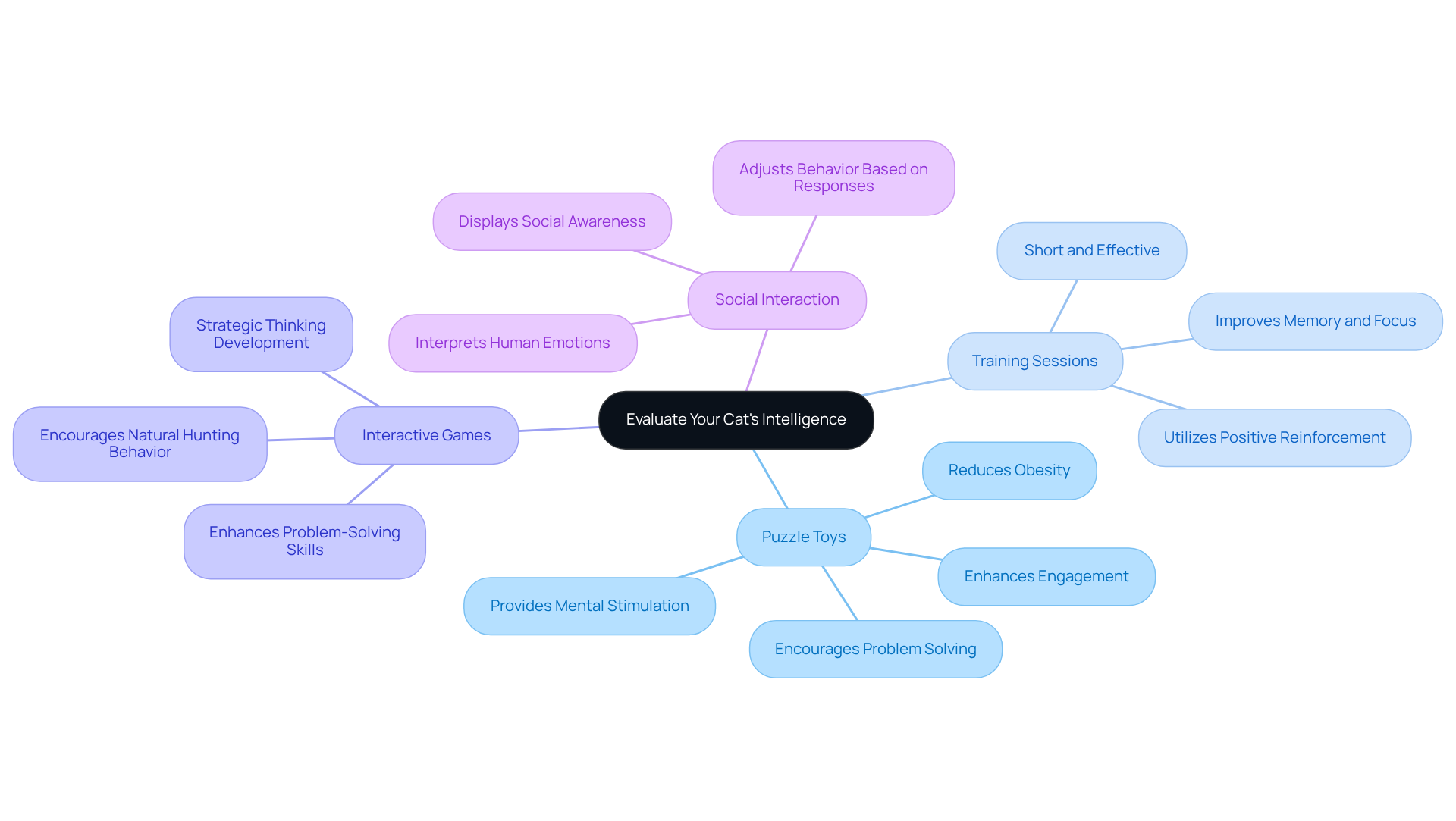
Consider Breed Differences: How Cat Breeds Influence Intelligence
Different cat breeds exhibit unique levels of cleverness, raising the question of how smart are cats and influencing their interactions with humans and their surroundings. Understanding these differences can enhance your appreciation of your furry family members and help you create a nurturing environment tailored to their specific needs. For instance:
- Siamese: Known for their vocal nature and social intelligence, Siamese cats are quick learners. They often master commands and enjoy engaging in interactive play. Their inquisitive nature allows them to thrive in stimulating environments, making them highly interactive companions.
- Bengal: Bengals are characterized by their high energy and curiosity. They showcase impressive problem-solving skills as they explore their surroundings. Their playful demeanor leads them to engage in activities that challenge their intellect, such as learning tricks or playing fetch.
- Persian: While Persians may not exhibit the same level of activity as other breeds, they demonstrate cleverness through their adaptability and effective communication of their needs. Their observant nature allows them to navigate their environment with ease, often forming strong bonds with their owners.
- Abyssinian: Recognized as one of the smartest cat breeds, Abyssinians are highly social and curious. They thrive on mental stimulation and interactive play, reflecting their cleverness through their ability to learn tricks and engage meaningfully with their owners.
- Burmese: Often described as dog-like, Burmese cats are affectionate and intelligent. They enjoy interactive games and socializing with their families. Their strong connection with humans highlights their emotional awareness and adaptability.
By investigating your cat’s breed, you can gain important insights into how smart are cats regarding their behavioral traits and mental skills. This knowledge promotes a more fulfilling relationship, allowing you to nurture your beloved pet in a way that resonates with their unique personality.
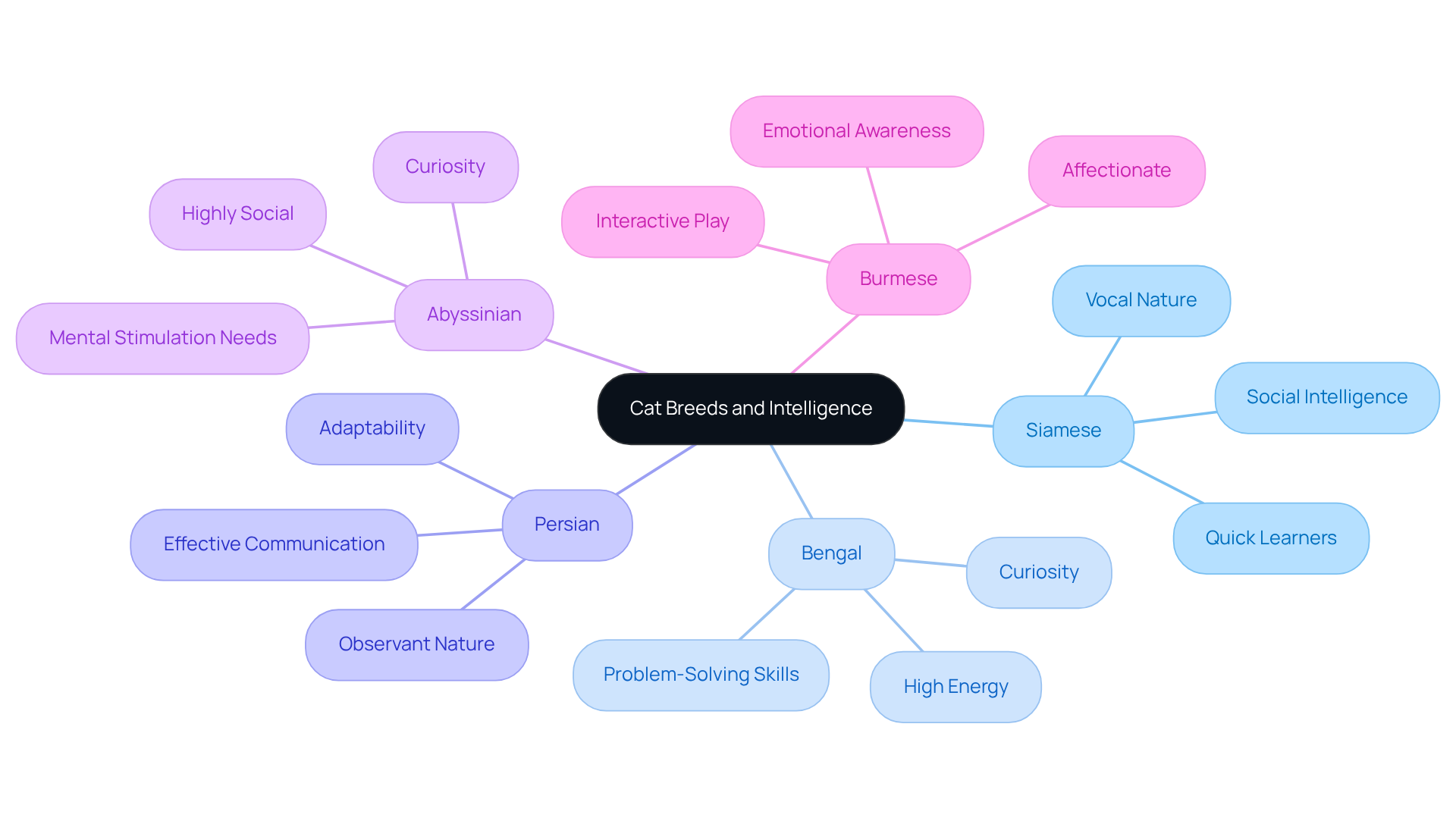
Recognize Intelligent Behaviors: Signs Your Cat is Smart
Recognizing how smart cats are by observing their intelligent behaviors can be a rewarding experience. Look for these signs that showcase their cleverness and adaptability:
-
Problem Solving: Does your cat open doors, manipulate toys, or find hidden treats? These actions reveal remarkable problem-solving skills, demonstrating their mental engagement and adaptability.
-
Adaptability: A truly intelligent feline adjusts their behavior in new environments. If your cat quickly learns to navigate a new home or adapts to changes in routine, it shows impressive cognitive flexibility.
-
Social Awareness: Intelligent cats often understand social cues, responding appropriately to your emotions or the actions of other pets. Their ability to communicate through various sounds and physical cues highlights their social intelligence.
-
Playfulness: Engaging in complex play, like stalking and pouncing on toys, indicates a cat’s mental involvement. Many cats enjoy games that challenge their skills, reflecting a desire for mental stimulation. Providing challenging toys can help increase your cat’s IQ.
By observing these behaviors, you can gain valuable insights into how smart cats are. Creating an enriching environment fosters their cognitive development. Consider providing interactive toys, teaching your cat tricks, and engaging in activities like puzzle feeders. These actions can enhance their problem-solving abilities, ensuring they remain mentally stimulated and, most importantly, happy. Your furry family member deserves a nurturing environment that supports their growth and well-being.
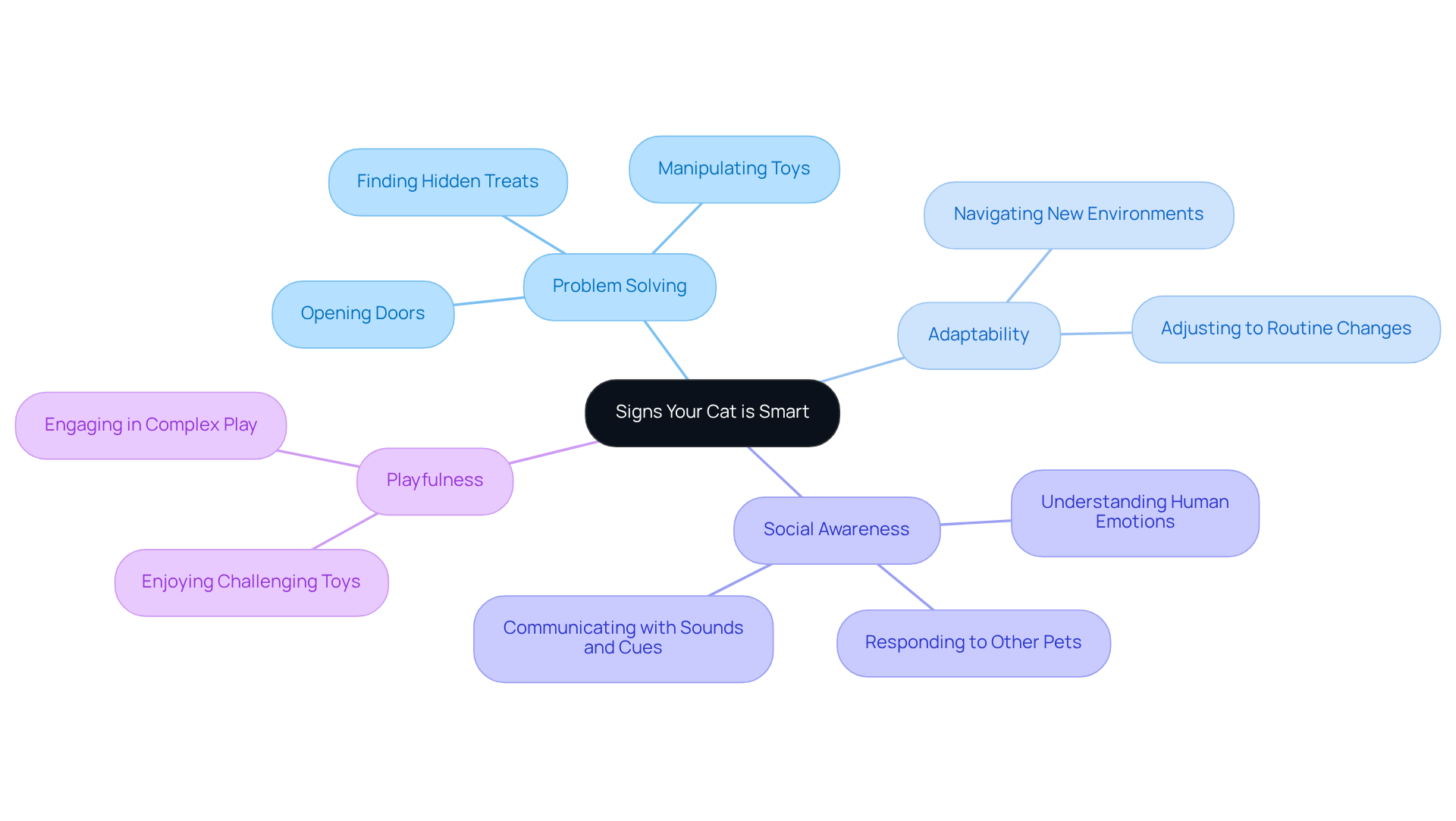
Conclusion
Understanding feline intelligence is not just fascinating; it’s a journey into the unique cognitive abilities of our beloved cats. These remarkable creatures possess problem-solving skills and social awareness that often go unnoticed. By truly appreciating how smart our furry family members are, we can deepen our bond with them, recognizing that their intelligence manifests in ways distinct from other pets, like dogs.
As we explore this topic, several key insights come to light:
- We can assess a cat’s intelligence through engaging methods such as puzzle toys, training sessions, and interactive games, as well as by observing their social interactions.
- It’s also essential to consider how breed differences influence intelligence, with certain breeds showcasing unique cognitive traits.
- By recognizing intelligent behaviors—like problem-solving, adaptability, and social awareness—we can further enrich our understanding of feline cognition.
Ultimately, nurturing a cat’s intelligence is vital for fostering a fulfilling relationship. By creating stimulating environments and providing engaging activities, we can support our cats’ cognitive development and overall well-being. Embracing the unique ways our cats exhibit their cleverness not only enhances their lives but also strengthens the precious bond we share with them. Let’s cherish our furry friends and commit to nurturing their remarkable minds.
Frequently Asked Questions
What does feline cognition encompass?
Feline cognition includes a diverse array of cognitive abilities such as problem-solving, social interaction, and adaptability.
How is feline intelligence different from canine intelligence?
Unlike dogs, whose intelligence is often assessed through compliance and trainability, cats demonstrate their intelligence through independent actions and unique problem-solving skills.
Can cats recognize their names and their owners’ voices?
Yes, research shows that cats can recognize their names and their owners’ voices, responding with subtle behaviors like head and ear movements.
What are some examples of cats’ problem-solving abilities?
Cats are adept at overcoming challenges, such as opening doors or locating hidden treats, which showcases their talent for learning and adapting.
Do cats possess object permanence?
Yes, studies indicate that adult cats possess object permanence, meaning they can remember the presence of objects even when they are out of sight.
How do cats perceive time?
Some cats can differentiate between time spans of eight seconds and ten seconds, indicating cognitive skills related to time perception.
How does the number of cortical neurons in cats compare to dogs?
Cats have nearly double the number of cortical neurons—around 300 million—compared to dogs, suggesting a greater capacity for certain cognitive tasks.
Why is it important for pet owners to understand feline intelligence?
Understanding how smart cats are helps pet owners appreciate their cat’s abilities fully and recognize their unique personality and skills.
What is feline cognitive dysfunction (FCD)?
Feline cognitive dysfunction (FCD) is a condition that can occur as cats age, leading to cognitive decline that affects their behavior and mental functions over time.







